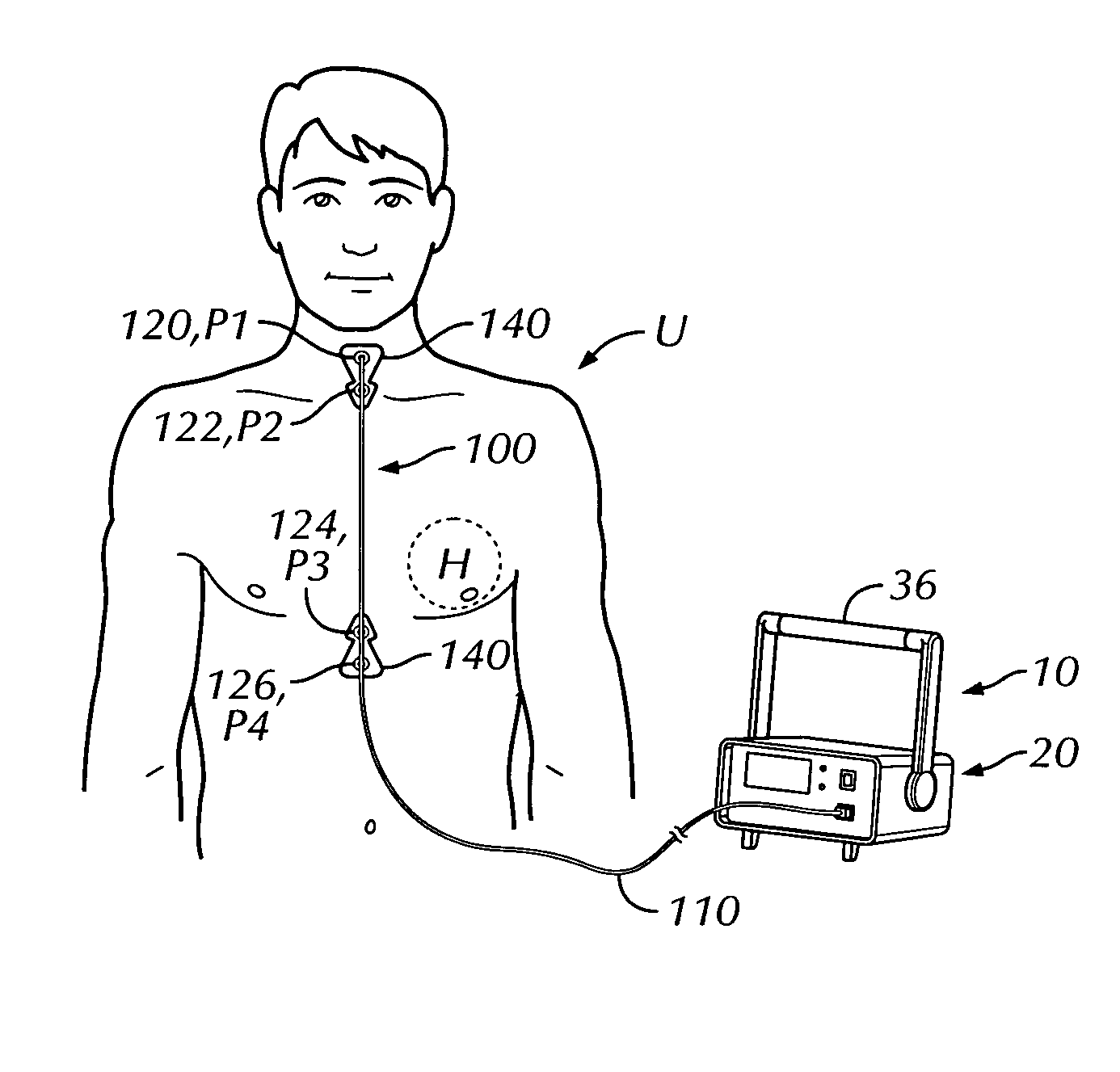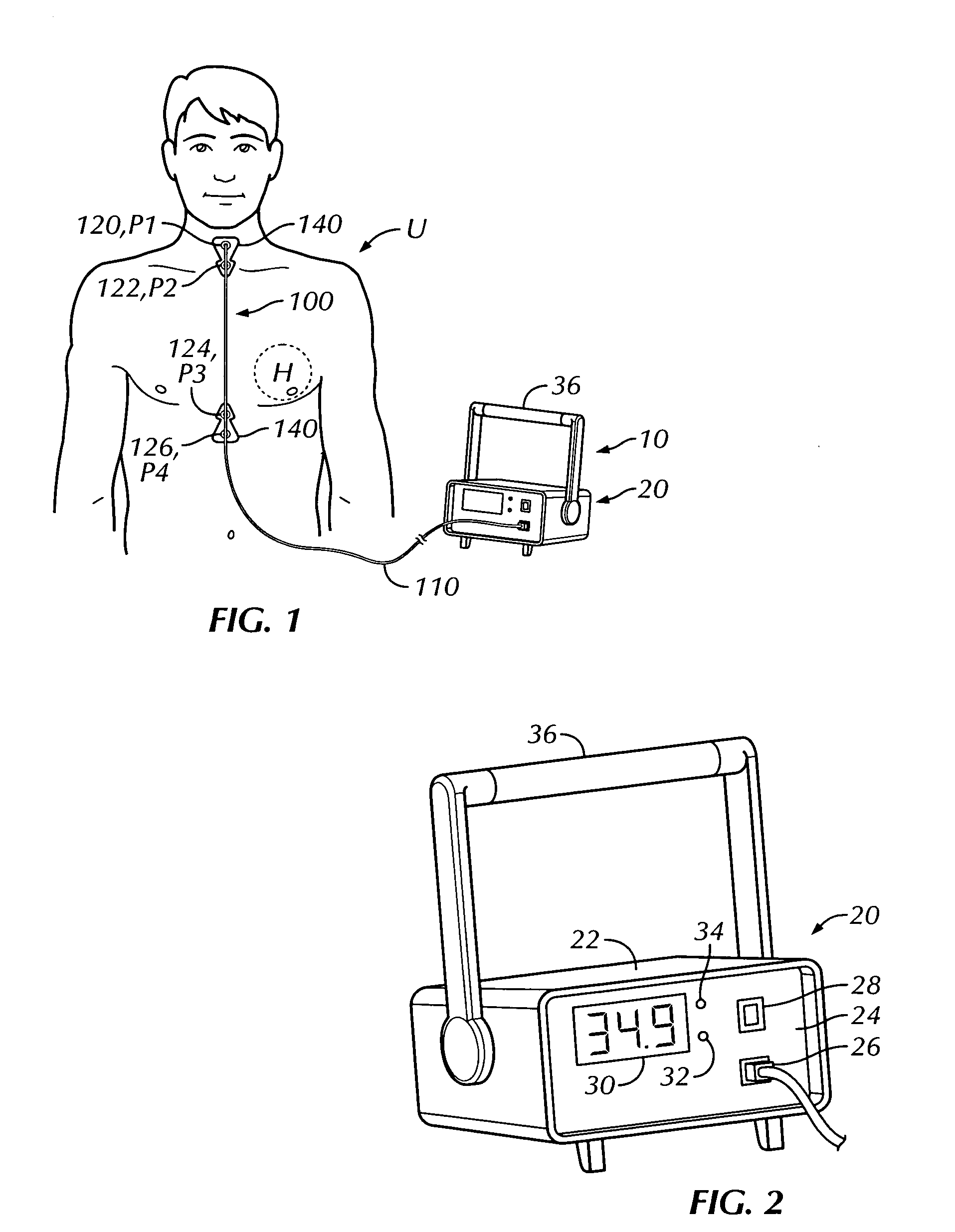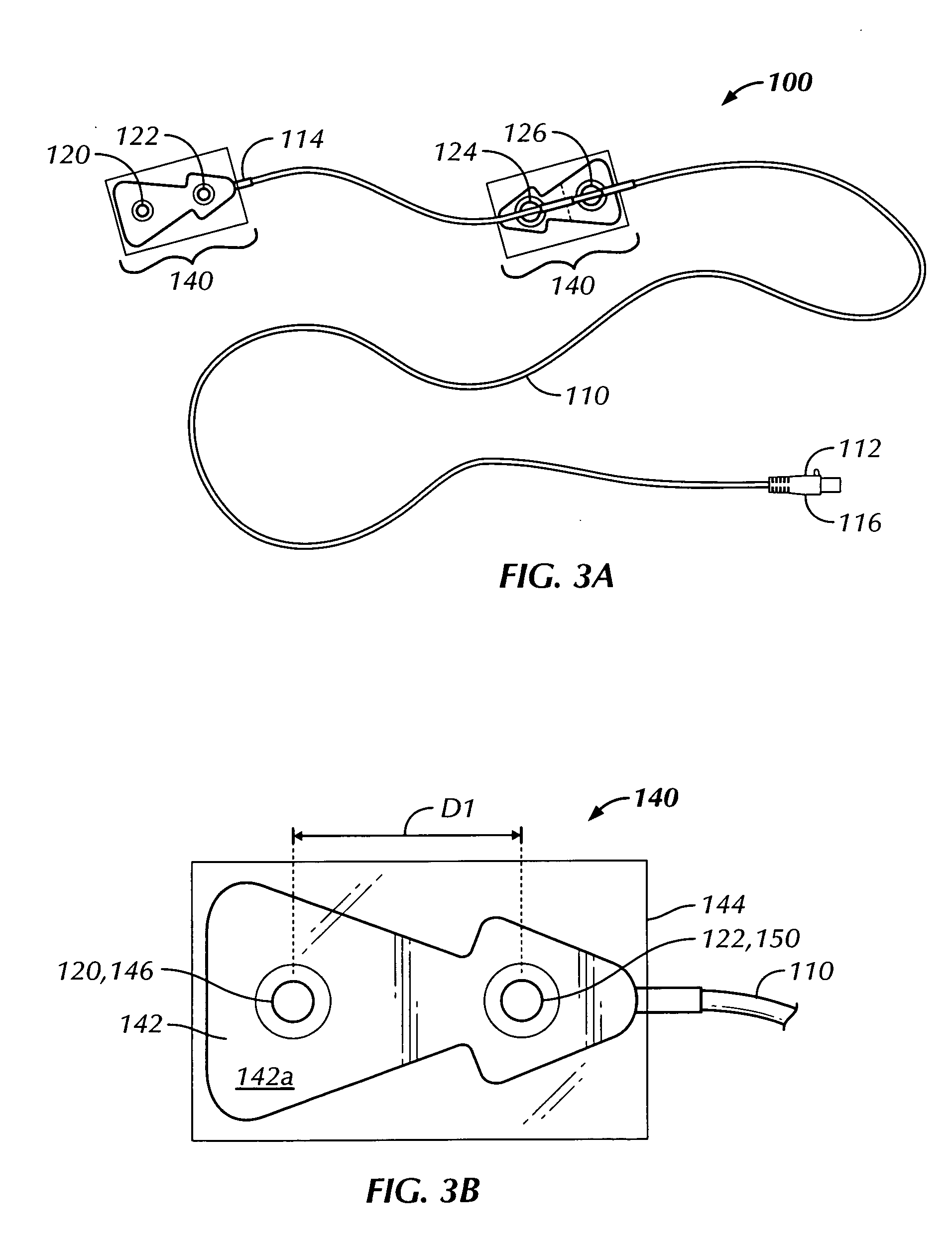Thoracic impedance monitor and electrode array and method of use
a technology of impedance monitor and electrode array, which is applied in the field of human impedance measurement devices, can solve the problems of pulmonary edema and/or peripheral edema and ascites, unable to contract with sufficient vigor, and severe incapacitation and possibly death,
- Summary
- Abstract
- Description
- Claims
- Application Information
AI Technical Summary
Problems solved by technology
Method used
Image
Examples
Embodiment Construction
[0029] The present invention resides in an “early warning” monitoring system or “monitor” and a method for determining changes in the status of patients with chronic congestive heart failure (CHF), with the goal of intervening before the onset of acute congestive heart failure. The monitor can be used for other purposes such as determining relative hydration levels and / or fluid loss or retention in individuals such as athletes and dieters.
[0030] U.S. Provisional Patent Application 60 / 556,394, from which the present application claims priority, and U.S. Provisional Patent Application 60 / 549,739 titled “Base Impedance Fluid Monitor”, filed on Mar. 3, 2004 and incorporated by reference in U.S. Application 60 / 556,394, are both incorporated herein by reference in their entirety.
[0031] In accordance with the present invention, a process for monitoring patients comprises the steps of applying electrodes to points on the thorax symmetrically positioned with respect to the heart, passing a...
PUM
 Login to View More
Login to View More Abstract
Description
Claims
Application Information
 Login to View More
Login to View More - R&D
- Intellectual Property
- Life Sciences
- Materials
- Tech Scout
- Unparalleled Data Quality
- Higher Quality Content
- 60% Fewer Hallucinations
Browse by: Latest US Patents, China's latest patents, Technical Efficacy Thesaurus, Application Domain, Technology Topic, Popular Technical Reports.
© 2025 PatSnap. All rights reserved.Legal|Privacy policy|Modern Slavery Act Transparency Statement|Sitemap|About US| Contact US: help@patsnap.com



